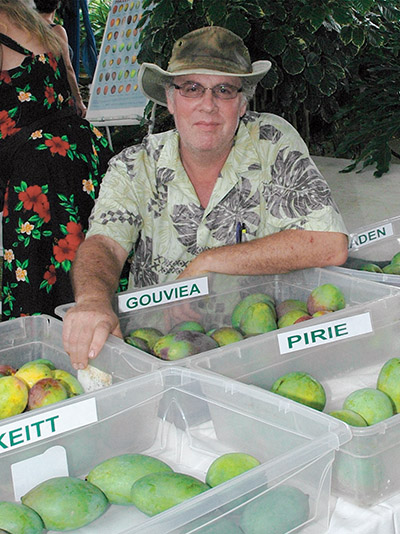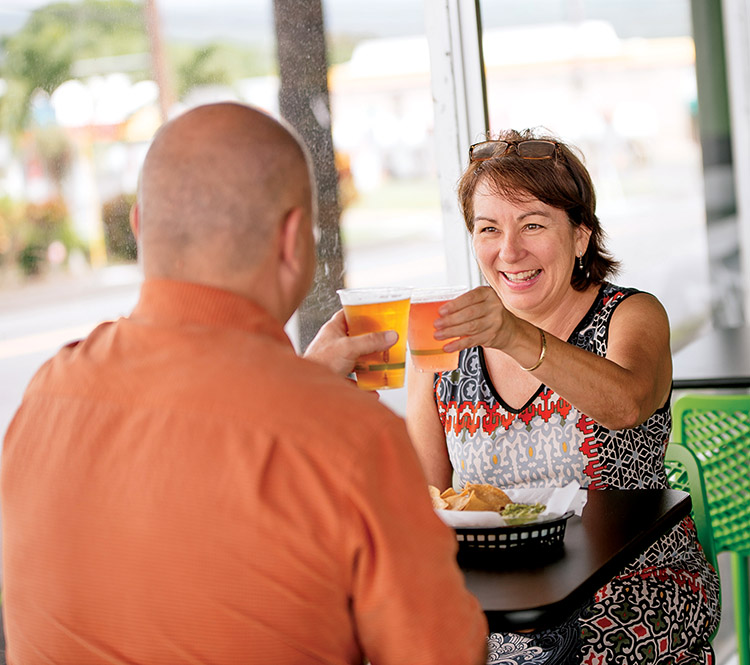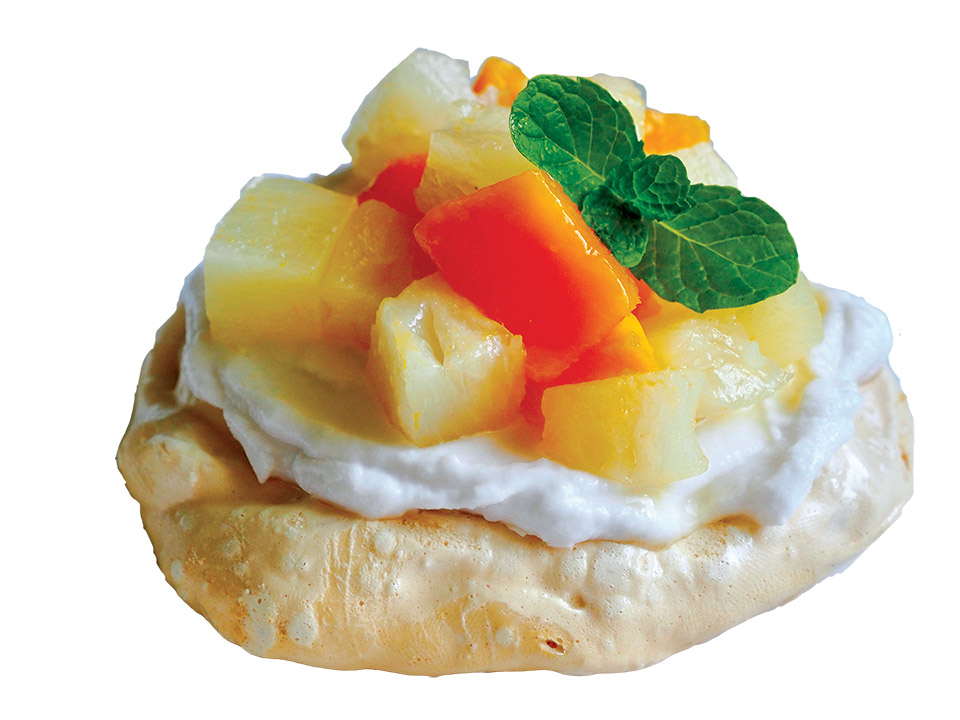
Hala Kahiki: A Brief History of Pineapple and Pineapple Pavlova Recipe
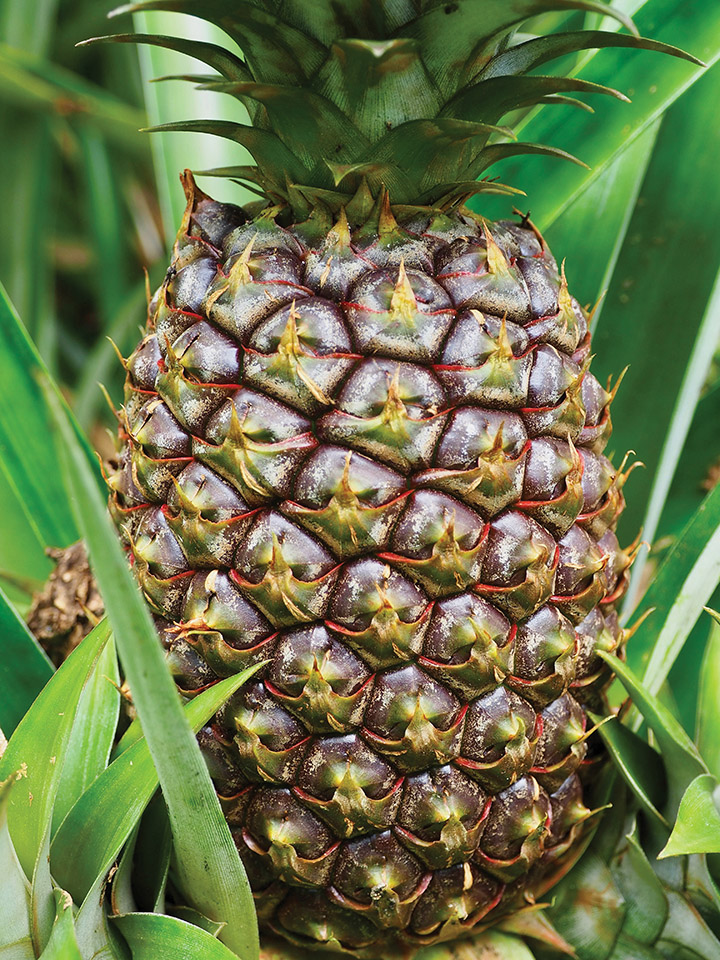 By Brittany P. Anderson
By Brittany P. Anderson
Pineapple is one of my favorite fruits grown on Hawai‘i Island, with the white pineapple being absolute perfection. One of the only edible varieties of bromeliad, the pineapple is neither pine nor apple and many a visitor is astonished to find it does not grow on trees.
In Hawai‘i, the pineapple looks similar to hala (pandanus) fruit, which is why it is called “hala kahiki” in Hawaiian. The pineapple is native to Paraguay and southern Brazil and later was cultivated throughout South and Central America, Mexico, and the West Indies. Explorer Christopher Columbus observed pineapple during a stop at the Carribean island of Guadeloupe in 1493, and he brought the exotic spiked crown fruit to Spain.
Pineapples became a sign of wealth in 1600s Europe where you could rent a pineapple for a dinner party, just to show off the expense to guests. The fruit later became a home decor motif as a sign of hospitality after ship captains took to sticking a pineapple onto their front gate letting everyone know they were home safe and welcoming visitors. European kings and queens created greenhouses, known as pineries, to have a ready supply of the sweet tropical fruit.
No one is quite sure when pineapples arrived in Hawai‘i, however there are accounts that the Spanish visited in the 1500s and quite possibly brought a few pineapples to shore. In our time, “Dole” is a name that is almost synonymous with Hawaiian pineapple, however it was John Kidwell who gave birth to the Hawai‘i pineapple industry.
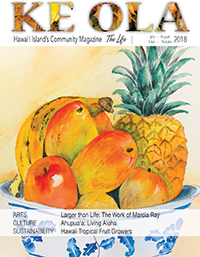
A trained nurseryman from London, Kidwell traveled west to Hawai‘i from San Francisco in 1882, a trip ripe with business connections. He had set out intending to begin a commercial nursery, however en route he learned about California’s growing demand for pineapples.
Kidwell and his shipping partner decided to harvest wild pineapples from Hawai‘i Island and cultivate them on O‘ahu in order to decrease shipping time. Kidwell developed 4–5 acres of pineapples in Mānoa Valley. In searching for the sweetest fruit that could stand up to the long voyage to California, he ordered every variety of pineapple from sources in Florida, Jamaica, and London. The Hawai‘i Island cultivar remained the favorite.
Transporting ripe fruit continued to be problematic for Kidwell because fruits had to be picked green in order to last the voyage yet arrived acidic and sour, so he decided to try new technology—canning. The tariffs on pineapple entering the United States and excessive shipping charges made the pineapple industry barely profitable. Kidwell sold off his cannery and leased his fields to sugarcane, retiring at 50 years old in 1898. After the annexation of Hawai‘i, Dole began his commercial pineapple operation in Wahiawā, O‘ahu. Then a US territory, Hawai‘i pineapple had no expensive tariff making it a lucrative endeavor for Dole, and by the 1960s Hawai‘i was supplying 80% of the world’s canned pineapple.
Several varieties still pay homage to the wild Hawai‘i Island pineapples that founded the industry. The Hilo is a compact yellow, low fiber flesh variety that was developed in Hawai‘i in 1960; the Kona is a white flesh, super sweet, and tender core variety. Cruising farmers’ markets during the summer months, you can find fresh and fragrant locally-grown white and yellow pineapples. What better way to highlight a juicy fresh pineapple than putting it on a pillow of crisp meringue and a dollop of whipped cream—I’m talking Pavlova.
This Pineapple Pavlova features garden fresh white pineapple chunks paired with mango and mint. For whipped cream, I usually substitute whipped coconut cream for a light yet decadent locally sourced dessert.
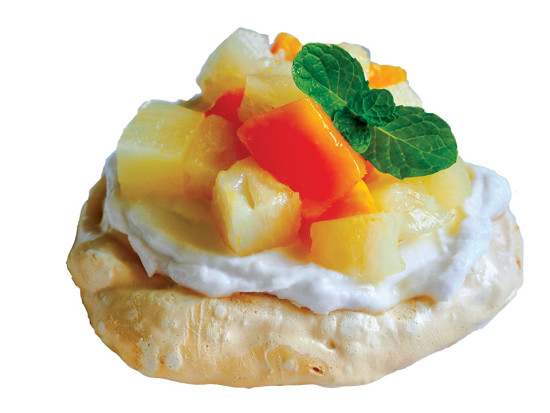 Pineapple Pavlova
Pineapple Pavlova
4 large room temperature egg whites
¾ cup sugar
¼ tsp. vanilla extract
1 pineapple, cubed
1 mango, cubed
10 mint leaves
Whipped cream
Method
Preheat the oven to 225˚F. Place parchment paper on a sheet pan. Place egg whites in electric mixer bowl fitted with a whisk attachment. Beat egg whites on high speed until firm, about 1 minute. With mixer still on high, slowly add sugar and vanilla extract. Beat until firm, shiny peaks form, about 2 minutes. Spoon the meringue into 4-inch circles making sure to create a slight depression in the middle to hold the toppings. Repeat until all meringue is used. Bake for 60–70 minutes, so the outside is crisp, but the inside is soft and chewy.
While the meringues bake, cut up pineapple and mango, place in a bowl and set aside. Once meringues are cooked, let cool before removing from parchment. Spread with your favorite whipped topping. Chop mint, toss with mango and pineapple. Spoon the fruit into the middles of the meringues, drizzling a spoonful of any juices that collect in the bowl. Serve immediately.
Photos by Brittany P. Anderson

